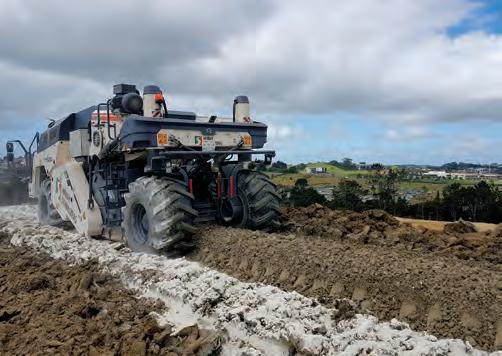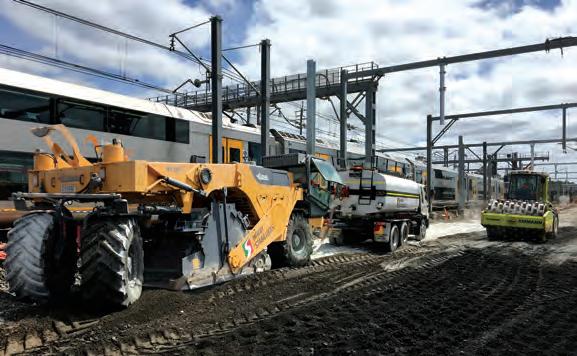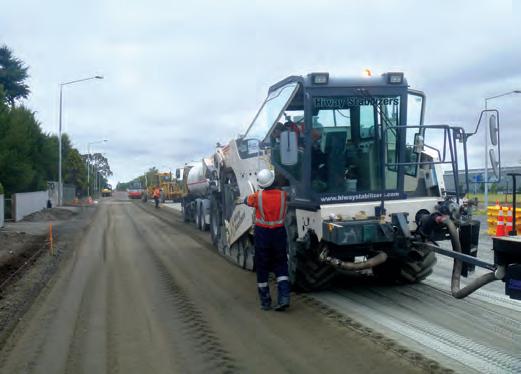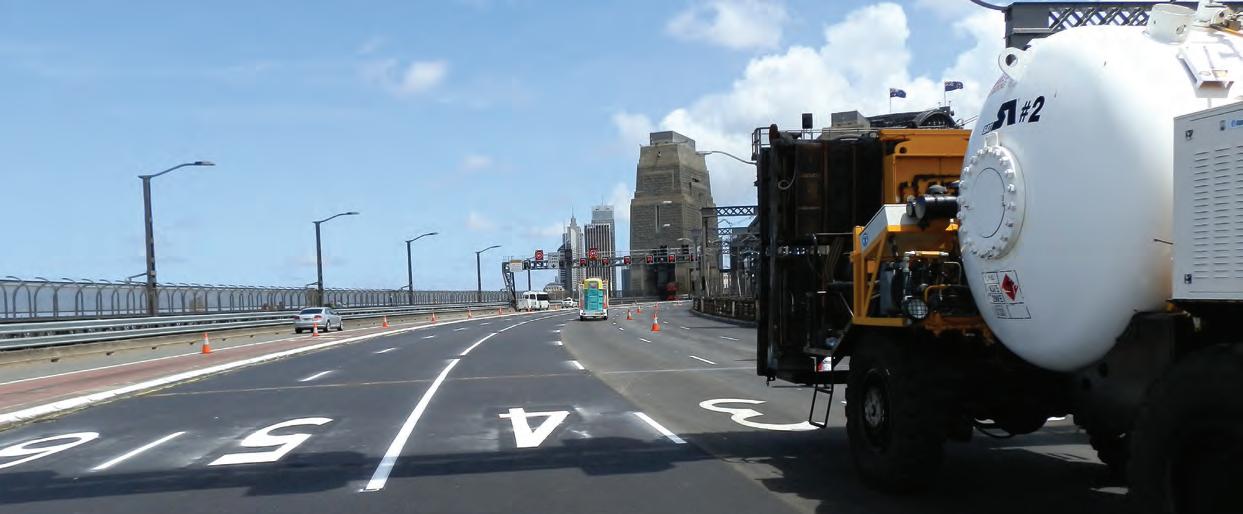
9 minute read
Cross River Rail
TURN UP AND GO
CROSS RIVER RAIL IS SET TO EASE THE STRAIN FROM QUEENSLAND’S ROAD TRANSPORT NETWORK WITH A GOAL OF TAKING 47,000 CARS OFF THE ROAD BY 2036.
As Queensland’s biggest infrastructure project, Cross River Rail is more than just a rail project. By offering a new 10.2-kilometre rail from Brisbane’s Dutton Park to Bowen Hills, including 5.9 kilometres of twin tunnels under the Brisbane River and CBD, the project will alleviate stress from the transport network.
In making public transport a more attractive option, the project is looking to take around 47,000 cars off the road by 2036.
Of course, as a rail project, unlocking the bottleneck at the core of the rail network is a key element. With the current rail network nearing capacity and constrained by a single river crossing and four Brisbane stations in the CBD, the Cross River Rail will alleviate the bottleneck.
Likewise, providing more trains to run across the complete South East Queensland network and integrating with new roads and bus services is another important benefit, not least revitalising multiple inner-city precincts.
Put in perspective, the Cross River Rail Business Case, released in August 2017, found the project benefits would exceed the costs by $1.9 billion.
At a glance, the project comprises four underground stations at Boggo Road, Woolloongabba, Albert Street and Roma Street. It also covers two upgraded stations at Dutton Park and Exhibition and six upgraded stations from Salisbury to Fairfield on Brisbane’s southside. Moreover, the project includes the development of three new Gold Coast Stations at Pimpama, Helensvale North and Merrimac.
Cross River Rail has been more than 10 years in the making, with the Newman Government bringing in an expert panel in 2012 to review the business case. Former Transport Minister Scott Emerson had remarked at the time that the earliest possible project delivery would be 2020.
Almost a decade later, as predicted, more than 200 companies across South East Queensland have already secured Cross River Rail contracts, with more opportunities for the tunnels and stations works package set to be released. At least seven construction sites are currently active, with more to open. It’s even inspired the appointment of a ministerial portfolio in Kate Jones, who is also the Tourism Industry Development Minister, with the Queensland Government investing $5.4 billion to deliver the project.
Graeme Newton, Chief Executive Officer of the Cross River Rail Delivery Authority, says that what is perhaps underestimated is the power of this project to truly transform the region.
“The fact that Cross River Rail will help more trains get around the network, create new stations in Brisbane and the Gold Coast and upgrade eight others is only one part of the story,” he says.
Mr. Newton says the other part of the story is that Cross River Rail will act as a catalyst to change the urban landscape for the better.

The Woolloongabba Station Precinct will be transformed into a vibrant mixed-use hub.
He cites the Precinct Delivery Strategy that outlines the vision and path forward for the precincts that will be built at five of its station locations.
“For example, at Woolloongabba, there is an opportunity to give the suburb a real town heart, with the potential for public spaces, as well as new hospitality, retail, residential and office spaces,” Mr. Newton says.
Roma Street sees buses, coaches, city trains and regional trains all forming a transport hub along with Cross River Rail. As such, Mr. Newton says that there is potential to revitalise an underutilised part of the city and create a vibrant gateway to Brisbane. Not least of all, he says, this includes an option to progress plans for Brisbane Live. If built, the 18,000-capacity indoor entertainment arena would attract major events and generate economic and social benefits for the region.
Mr. Newton says that creating better connectivity and interesting spaces that help Brisbane evolve as a world-class city is a key part of the project. This encompasses making it easy to hop from one part of the city to another, right through to a turn-up-and-go rail system.
He adds that a number of industries have already expressed an interest in setting up near or as part of these precincts, as they understand how the project will transform the city and how people move around within it.
EARLY WORKS PROGRESSES Early works have been underway for a few years, with a geotechnical investigation and survey program beginning in 2017. Borehole drilling was conducted at more than 50 locations across the proposed Cross River Rail corridor, with the deepest hole drilled at Kangaroo Point which went 66 metres down.
As part of the early works program, project participants have also cleared the four-hectare site at Woolloongabba. This will form the launch site for the Cross River Rail tunnel boring machines and road headers. The preparation of the
The master alignment map highlights the scale of community change that will emerge from the project.

site included the demolition of three government-owned buildings and the removal of 45,000 tonnes of building waste, 95 per cent of which was recycled. Site remediation works then began on the Woolloongabba site, removing 138,000 tonnes of contaminated materials and their respective bulking factors.
A temporary coach terminal has also been built at Roma Street which opened in September last year. Mr. Newton says the new terminal will provide continuity for long-haul coach services previously housed in the Brisbane Transit Centre. He says this is arguably Brisbane’s ugliest building and will be demolished this year to make way for a new underground Roma Street station.
Mr. Newton says that since appointing primary contractors, the design and construction phase is progressing well.
“Projects of this size are complex creatures, but we’re pleased with the work
Roma Street is poised to become one of the state’s most significant transport interchanges.

from our contractors so far to align our three major works packages and keep things on track,” he says.
The Cross River Rail Delivery Authority has released the Fairfield station concept design with major construction at Fairfield station scheduled in mid-2020. Site survey and geotechnical investigations are continuing from Fairfield to Salisbury station and will continue throughout early 2020. The authority has also released the Exhibition Station concept design, with major construction expected in late 2020.
One of the innovative aspects of the project is Project DNA (Digital Network Approach) – a digital twin bringing Building Information Modelling, Geographic Information System and realistic visualisations of the project in a single, federated model.
Mr. Newton says it is used by many Cross River Rail teams. For example, engineers look at how to refine designs, while the project controls team tracks project progress. Planners aim to see how the precincts can knit into Brisbane’s urban fabric. In addition, the community information team use it for visualisations and virtual reality to bring the project to life for the public.
“Project DNA also helped us streamline our bidding process with major contractors for the project submitting their bids in a format that we could plug into our model,” Mr. Newton says.
“It meant that once contracts had been awarded, we could hit the ground running without the need for extensive and expensive rework.”
One of the three main works packages is the delivery of the European Train Control System (ETCS) – Level 2, which is widely used in Europe but a first for Queensland.
The ETCS is a signalling technology that removes the need for trackside signalling and relays information continuously between the rail management centre and the driver’s on-board computer.
“Because this gives us a greater ability to track and control train movements, it allows trains to operate more safely. It will also add capacity to and increase the efficiency of our rail network,” Mr. Newton says.
He says that in addition to Brisbane’s rail line, the Cross River Rail will also be installing the technology on the Cross River Rail line.
In terms of community feedback, Mr. Newton says the project has, overall, been well received.
He says the Cross River Rail is on schedule for completion by 2025 and is currently hitting all of its milestones. Critical to the project will be minimising community disruption during the plan and build phase and when selecting construction methodologies.
“Now that we’re into the constriction phase, it’s critical that we keep the community informed of what is happening,” he says.
“Most importantly, we work very closely with our stakeholders, including residents and business owners, local and state government agencies and other major projects.”
Mr. Newton says that by 2025, Brisbane will be completely transformed by the likes of Cross River Rail. This will complement the Brisbane Metro, Herston Quarter and the Dexus Waterfront development.
“However, for all of these projects to be a success, there will be some disruption, which is why it’s so important that we work with these projects that will change the face of Brisbane. We’re all aiming to mitigate disruption as much as we can,” he says.
EXCELLENCE FROM THE GROUND UP
Hiway Group has been delivering innovative ground improvement solutions since 1986. Our reputation for quality performance has been built upon our drive and commitment to safe work practices, innovation, environmental sustainability, leadership and excellence. It is our commitment to innovation, environmental sustainability and industry leadership that has seen us introduce cutting edge technologies into Australia and develop our own advanced methodologies and stabilising products. With a proven track record of ensuring high quality, lasting outcomes – even in challenging conditions – our in-house design and contracting teams are industry experts.



OUR ADDED VALUE We work across all sectors of industry specialising in fill drying saturated ground; treating and remediating soil contaminated sites; design, supply and laying of foam bitumen; aggregate modification; subgrade and subbase improvement. As well as the cost savings they generate our innovative solutions reduce construction time, increase strength and durability, and are more environmentally sustainable.

OUR CAPACITY Hiway Group has operations in NSW, Queensland, Victoria, SA, Tasmania and WA, as well our original operations continuing in New Zealand and the Pacific Islands. We have a large fleet of well-maintained and modern plant which is continually being augmented as new technologies become available and as we expand our operations. Many of our in-situ stabilisers are equipped for foamed bitumen works.

OUR CAPABILITY Our expert team also provides a proven one-stop-shop for design and construction. Our site operational staff are supported by a team of experienced professional engineers, pavement designers and project managers. Our experience covers all forms of in-situ stabilization basecourse modification services that are more cost effective than traditional road construction and rehabilitation methods.
Paul Rhoden GM NORTHERN REGION M. +61 455 677 665 T. +61 755 412 074 E. paulr@hiways.com.au
Mark Large GM WESTERN REGION M. +61 477 990 500 T. +61 8 9258 4488 E. m.large@hiways.com.au
Mark Filsall GM SOUTHERN REGION M. +61 428 803 001 T. +61 3 9730 2020 E. mark.f@hiways.com.au
www.hiways.com.au










